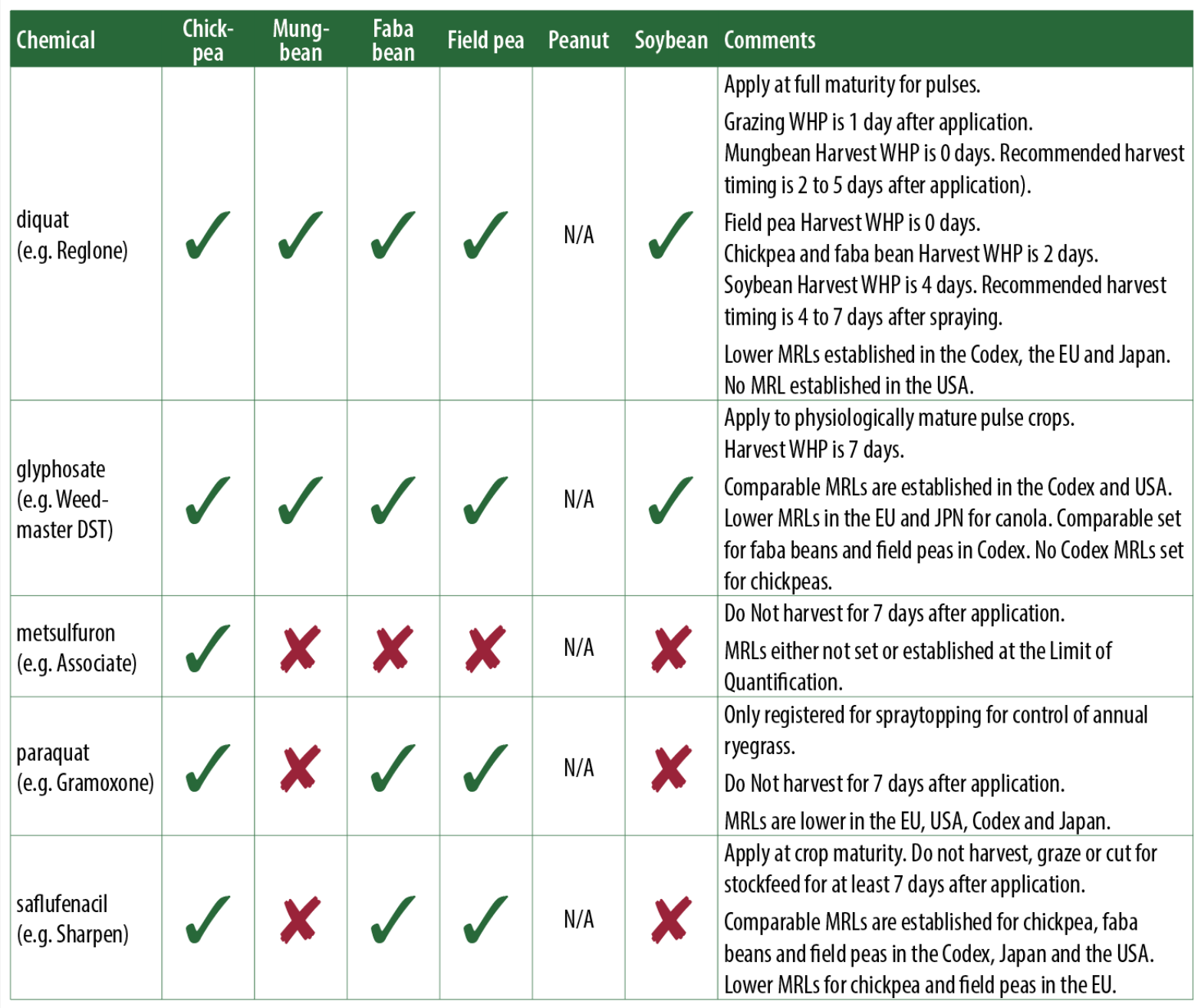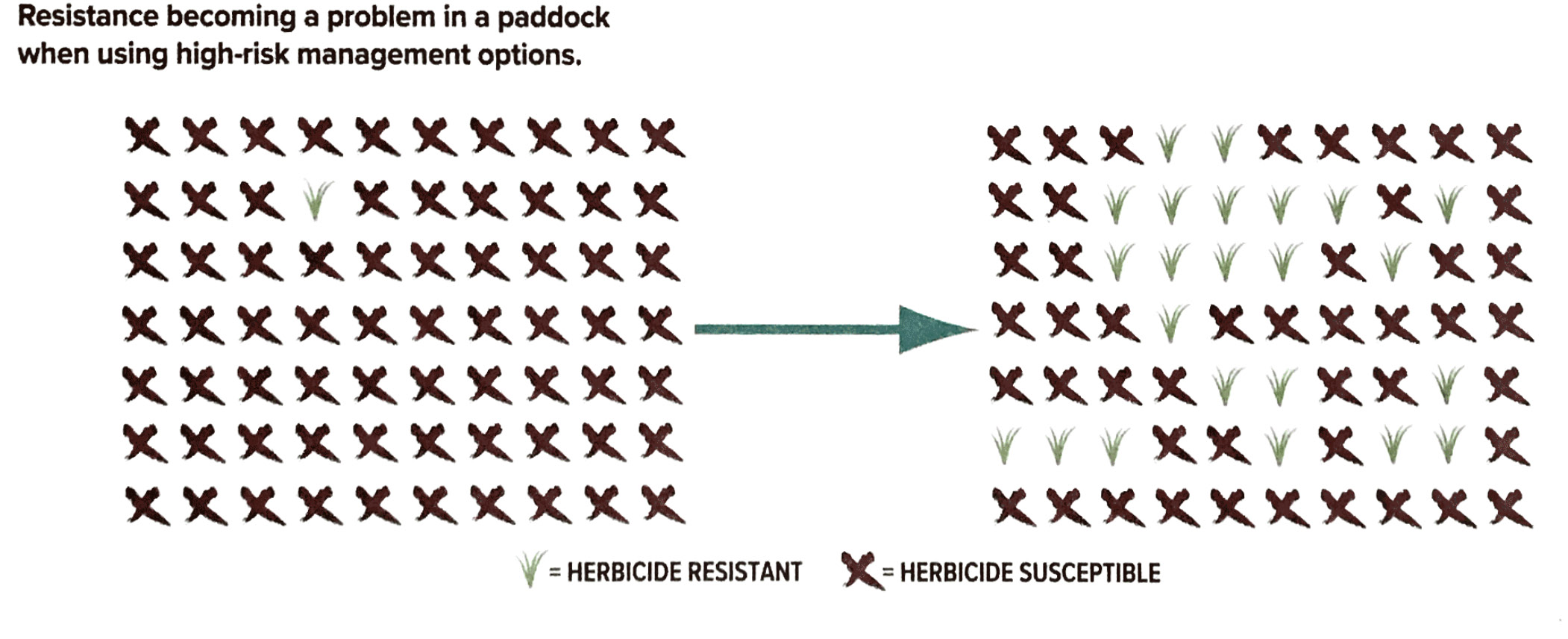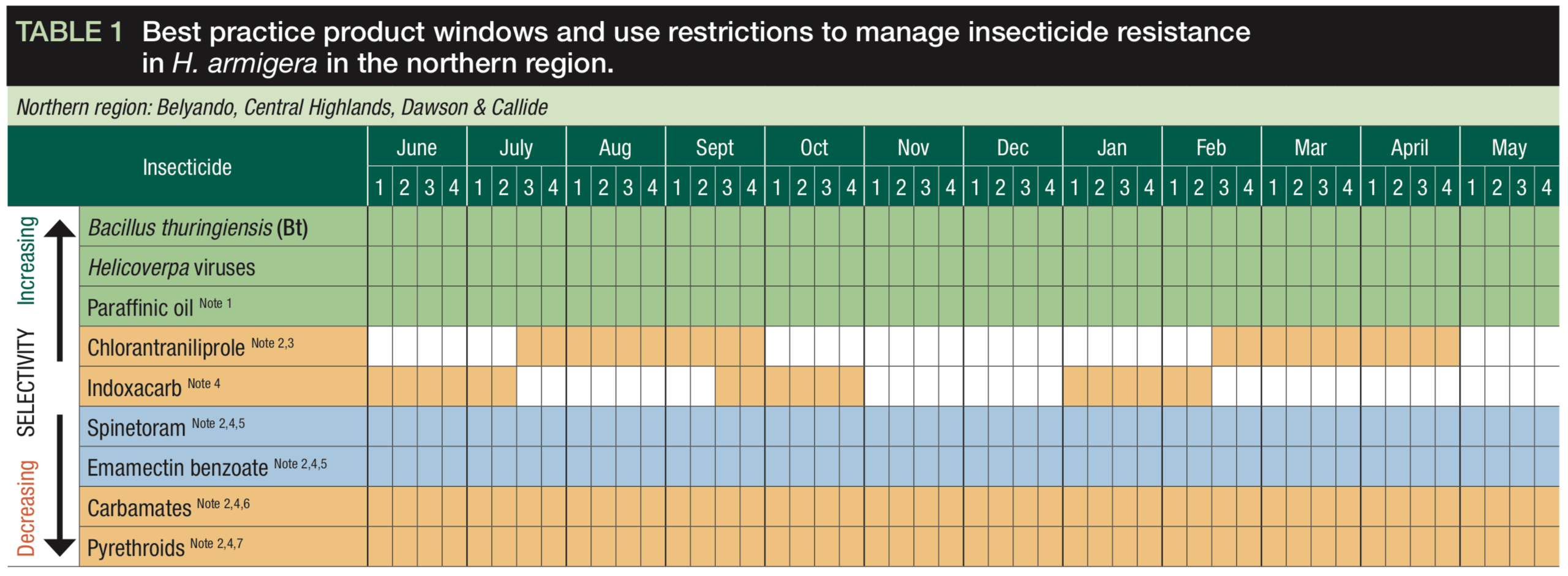Protecting quality and yield in pulse crops
Key points:
- Know and follow the label directions carefully
- Rotate modes of action
- Use non-chemical controls (e.g. crop rotation, preserve beneficials, crop competition)
- Avoid repeated use of the same crop protection products to manage the same population of weeds or insects
- Protect Australian grain trade by understanding Maximum Residue Levels and detailing chemical use on Vendor Declarations
Pulses are used primarily for direct human consumption and crop protection products are essential to preserve yield and grain quality in pulse crops.
BUT if they are not used correctly they can ruin Australia’s lucrative export markets. There is no room for error – right product, right rate, right time, right application.
Find out more:
Weed management in coastal farming systems
- Pulses are a valuable rotation crop for grass control in a sugarcane system.
- There are far fewer options for broadleaf weed control in pulses.
- Early weed control and vigorous crop competition are important strategies.
- Pulses respond well to narrow row spacing.
- Use pre-ems to provide early control coupled with highly competitive crop
- Pre-emergent – applied post planting is lower risk. Consider plant back periods and crop safety. More info about Rotational constraints.
- Most products must be applied within specific timeframes – for example: Do not apply haloxyfop once flowering has commenced in pulse crops.
- With desiccation, strictly follow withholding periods.
Get the details : Desiccation options for northern pulse crops

Crop competition in pulses
In a row spacing trial in soybeans and mungbbeans, Dr Bhaghirath Chauhan confirmed that row spacing, not plant population, is the key driver to reducing weed growth.
He says that his agronomic trials in summer legume (mungbean and soybean) crops are consistently showing that early canopy closure results in lower weed biomass and higher crop yield.
“We have demonstrated that narrower row spacing in summer legumes such as mungbean and soybean will take the pressure off in-crop herbicide applications, provided the crop is sown into clean paddocks and weeds are controlled for at least three weeks after planting,” he says. “Increased yield is a significant benefit and will support growers’ decisions to set up their planting gear to suit farming on narrower row spacings.”
Source: Giving summer pulses the competitive edge
Other useful resources:
Herbicide resistance
- Mix and rotate herbicide modes of action
- Employ crop competition
- Use herbicide and non-herbicide weed control methods to eliminate survivor weeds and stop seed set
For more information about herbicide resistance : WeedSmart

Insect management in coastal farming systems
- The green bridge is a serious problem for managing insects throughout the year
- Multiple host crops/weeds/vegetation provide continuous habitat for insects
- Resistance is a major concern and requires high level crop inspection and only spraying when thresholds are reached
- Monitor and protect beneficials
A tip from DAF principal entomologist, Hugh Brier : There is a mistaken belief that zero pest tolerance is the best way to maximise returns to growers and that all pests should be sprayed on sight. This is FAKE NEWS! The truth is that over-spraying wastes money, kills beneficials and speeds up the development of resistance. Read more on the Beat Sheet blog.
Key principles:
- Correctly identify pest and beneficial species and stages
- Use softer options first – preserve beneficials
- Rotate modes of action
- Don’t spray until pest levels have reached the economic threshold
- Follow the strategy program
Helicoverpa resistance management strategy for northern Australia

Check the factsheet for the recommended program for southern Qld and northern NSW.
Helicoverpa resistance management strategy
Other resources:
Disease management in coastal farming systems
- Currently fungicide use is relatively low in most pulse crops in most years.
- Most fungicides are protective so must be applied prior to the disease spreading.
- Monitor soil health and disease presence on stubble.
- Avoid planting several pulse crops in a row.
- Bacterial and viral diseases can not be managed using crop protection products.
More resources:
Read Pulse Check blog articles | Pulse Check Coastal facebook | Subscribe to the monthly newsletter

